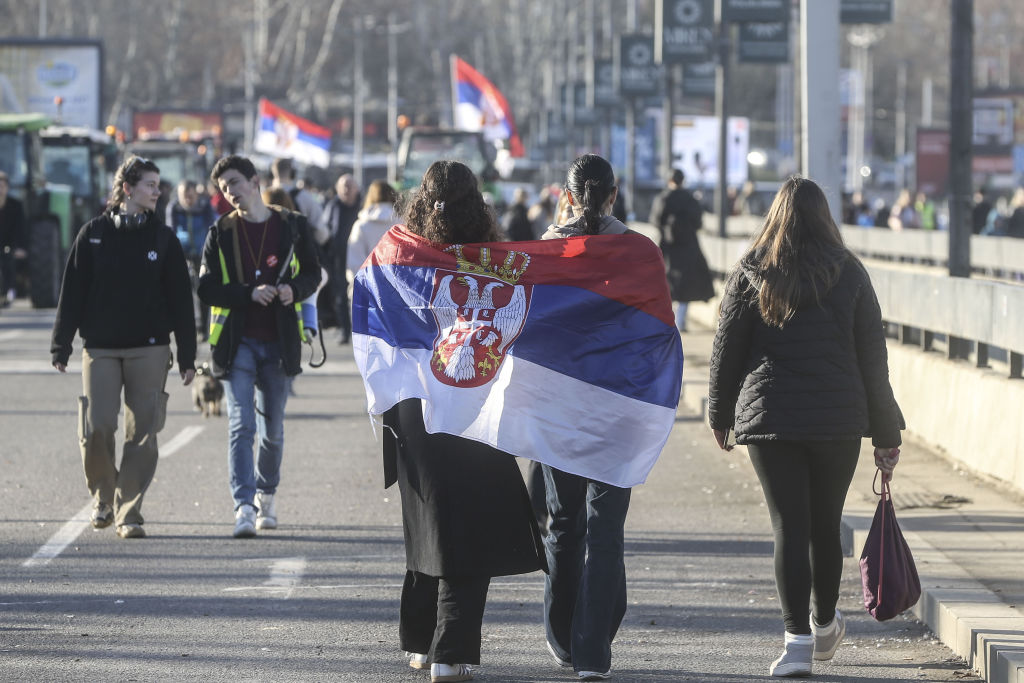Soon after the roof canopy of Novi Sad’s central train station collapsed last November 1, killing fifteen people, a TV reporter asked local journalist Igor Mihaljević to respond to the event. With devastating and incisive judgement, he offered the context missing in Western media coverage of the incident and the protests of the last few months.
For one, Mihaljević noted, this was the latest incident in the often tragic history of Serbia’s second-largest city. In its past, Novi Sad suffered the genocidal Hungarian army campaign that massacred Jews, Serbs, and Romani across the region. That was in the same era as the devastating military occupation of Yugoslavia by Nazi Germany and its client states. More recently, there was the seventy-eight-day NATO bombing campaign in 1999, which killed 527 Yugoslavs and hobbling major cities like Novi Sad by taking out key infrastructure. But this time, Mihaljević argued, was different — for now it was the Serbian state itself killing its people.
The train station collapse has left both the city and the nation in shock, triggering primal fears of the sky falling overhead. Many Serbs, especially in Novi Sad, now regard overhead structures with suspicion, with some even avoiding the newly constructed, Chinese-funded high-speed railway. However, the aftermath has also sparked a powerful wave of protests, so intense that they threaten to topple President Aleksandar Vučić, sending shock waves through his corrupt Serbian Progressive Party (SNS).
Led by student organizers from over thirty universities and…
Auteur: Tamara Kamatović

